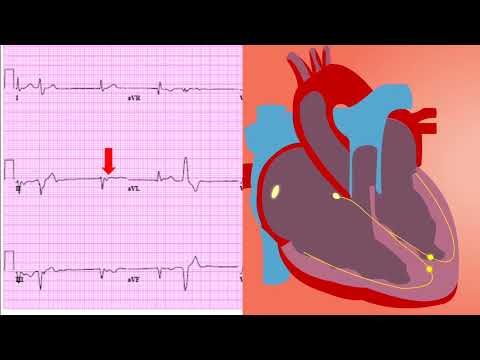🎬 Video Summary
This video provides a concise overview of pulmonary embolism (PE), a critical condition affecting the lungs. It explains the pathophysiology of PE, different types, diagnostic approaches, and available treatment options. This video is a valuable resource for medical students, healthcare professionals, and anyone seeking a better understanding of pulmonary embolism diagnosis and management.
🧠 Teaching Pearls
- 💡 Learn the underlying mechanisms of pulmonary embolism and its impact on the pulmonary system.
- 💡 Understand the classification of pulmonary embolisms based on size, location, and severity.
- 💡 Discover the key diagnostic tools used to identify pulmonary embolism, including imaging techniques.
- 💡 Explore the various treatment strategies for pulmonary embolism, including anticoagulation and thrombolysis.
- 💡 Gain insights into the management of complications associated with pulmonary embolism.
❓ Frequently Asked Questions
Q: What are the most common symptoms of a pulmonary embolism?
A: The most common symptoms include shortness of breath, chest pain, and coughing up blood. However, symptoms can vary depending on the size of the clot and the overall health of the individual.
Q: How is a pulmonary embolism diagnosed?
A: Diagnosis typically involves a combination of physical examination, blood tests (such as D-dimer), and imaging techniques like CT pulmonary angiography (CTPA) or ventilation/perfusion (V/Q) scans.
Q: What are the risk factors for developing a pulmonary embolism?
A: Risk factors include prolonged immobility (e.g., long flights), surgery, cancer, pregnancy, certain medical conditions, and a history of blood clots.
Q: What are the main treatment options for pulmonary embolism?
A: The primary treatment is anticoagulation (blood thinners) to prevent further clot formation. In severe cases, thrombolysis (clot-busting drugs) or surgical embolectomy may be necessary.
Q: How can I prevent a pulmonary embolism?
A: Prevention strategies include regular exercise, avoiding prolonged sitting or standing, using compression stockings, and taking anticoagulant medication as prescribed by a doctor, especially after surgery or during high-risk situations.
Q: What is the long-term outlook for someone who has had a pulmonary embolism?
A: With prompt diagnosis and treatment, most people recover well from a pulmonary embolism. However, some individuals may develop chronic complications such as pulmonary hypertension, requiring ongoing management.
🧠 Key Takeaways
- 💡 Pulmonary embolism is a serious condition requiring prompt diagnosis and treatment.
- 💡 Accurate diagnosis relies on a combination of clinical assessment and imaging techniques.
- 💡 Treatment primarily focuses on preventing further clot formation and, in some cases, dissolving existing clots.
- 💡 Understanding the risk factors for PE can help in preventative measures.
- 💡 Long-term management may be necessary to address potential complications.
🔍 SEO Keywords
Pulmonary embolism, PE diagnosis, PE treatment, blood clot in lung, pathophysiology of PE, pulmonary angiography, anticoagulation therapy
“`

